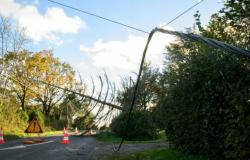Iwrote one of the most famous and iconic pieces of French song. Charles Dumont, composer of the legendary “Non, je ne regrette rien” by Edith Piaf, died in the night from Sunday to Monday in Paris at the age of 95, his partner Florence announced to Agence France-Presse (AFP). This musician, who had also collaborated with Barbra Streisand, died following a long illness at his home.
The career of this trained trumpeter took a major turn at the turn of the 1960s, when he convinced the star Édith Piaf to perform one of his compositions, after having suffered several refusals.
“Édith Piaf brought me into the world”
“No, I regret nothing” has since become an unforgettable La Môme standard, known throughout the world. “My mother gave birth to me, but Édith Piaf brought me into the world,” said the singer-songwriter born in Cahors on March 26, 1929. “Without her, I would never have done everything that I did, neither as a composer nor as a singer,” he assured during an interview with AFP in 2015.
For Charles Dumont, this meeting marked the beginning of a fruitful collaboration with Piaf, which gave birth to more than 30 pieces, including “Mon Dieu” and “Les Flonflons du bal”.
ALSO READ October 10, 1963. The day Édith Piaf died in GrasseThroughout his nearly sixty-year career, Charles Dumont also collaborated with Dalida and Tino Rossi and converted to “cr […] Read more
France






